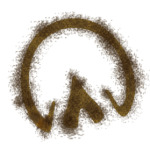Hay Friends,
Remember in my last blog post I promised to share with you the location of a horse’s third eye? Well, it’s right in front of the ears, hidden underneath the forelock, but you can’t see it! Just kidding! Horses don’t actually have a REAL third eye – that would be bizarre! They do however have something called a pineal gland in their brain that processes information about the environment, like exposure to daylight, similarly to the actual eye. The pineal is a small reddish brown egg-shaped gland located in the center of the brain tucked between the two hemispheres.
Through a series of chemical reactions, the amount of light, processed through the eye’s retina, is sent through various parts of the brain and ultimately received by the pineal gland. The primary functions of the pineal gland are to synthesize and secrete the hormone melatonin. Melatonin is a powerful hormone that plays an important role in adjusting the body to photoperiod and affecting circadian rhythms, such as the sleep-wake cycle, as it processes light exposure. The release of the hormone is not constant however; it is a pattern of the lowest concentrations occurring during daylight hours and peaking at night when it’s dark. The varying levels of melatonin tell a horse what season it is and whether or not it should shed its hair or for mares to begin reproductive function. Pretty cool, huh?
Spring IS in the air and my pasture is beginning to sprout new luscious grass. Better for me than hot dogs and peppermints! Did you know that there are different species of grasses grown in horse pastures? Look out for my next blog post, where I’ll talk about the different varieties of my most favorite food!
Until next time,
Lord Nelson

